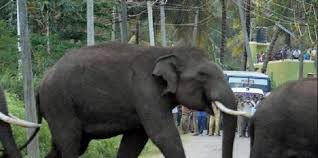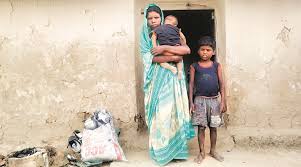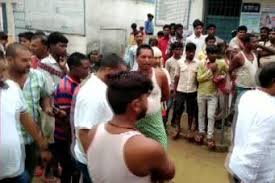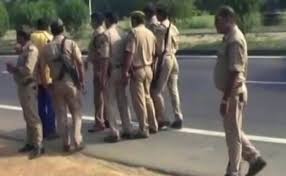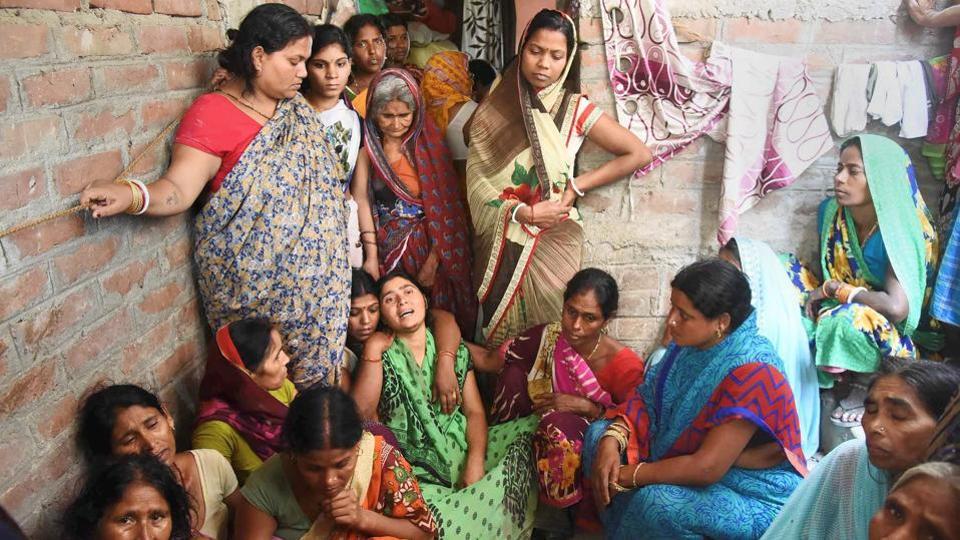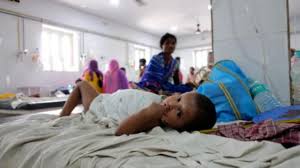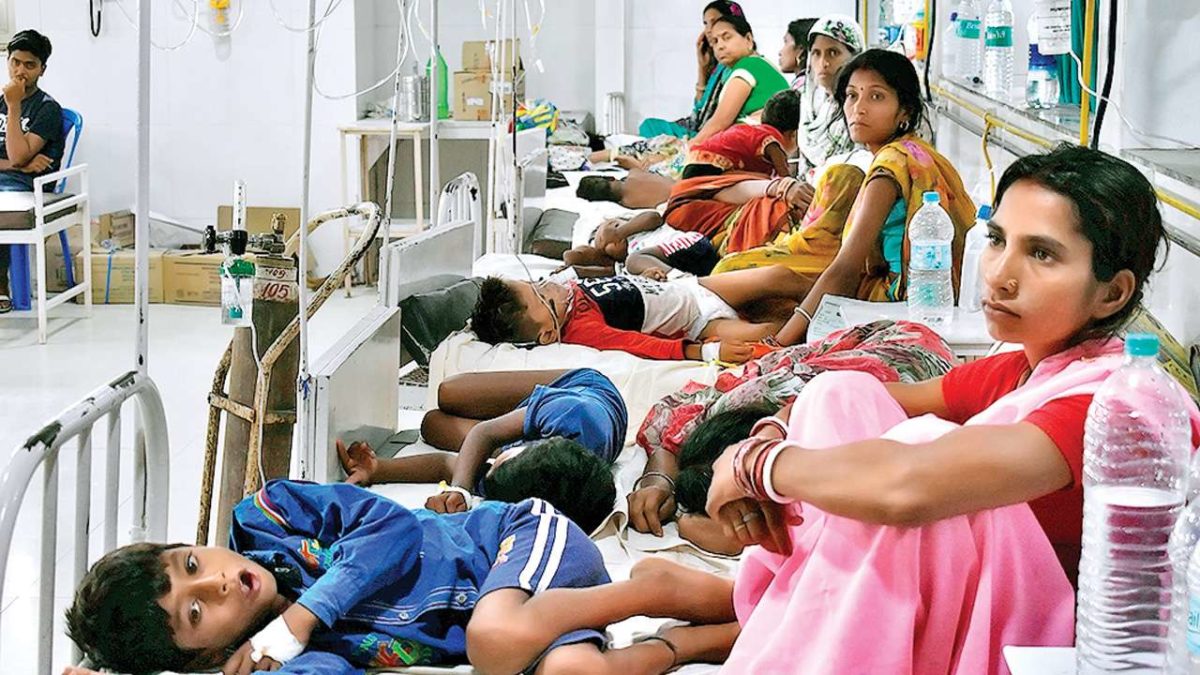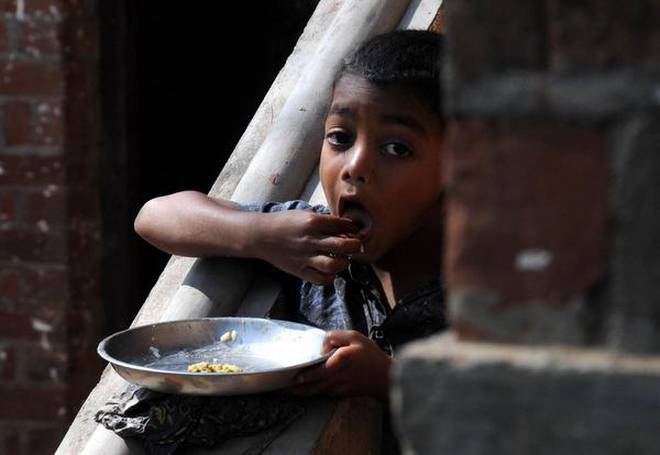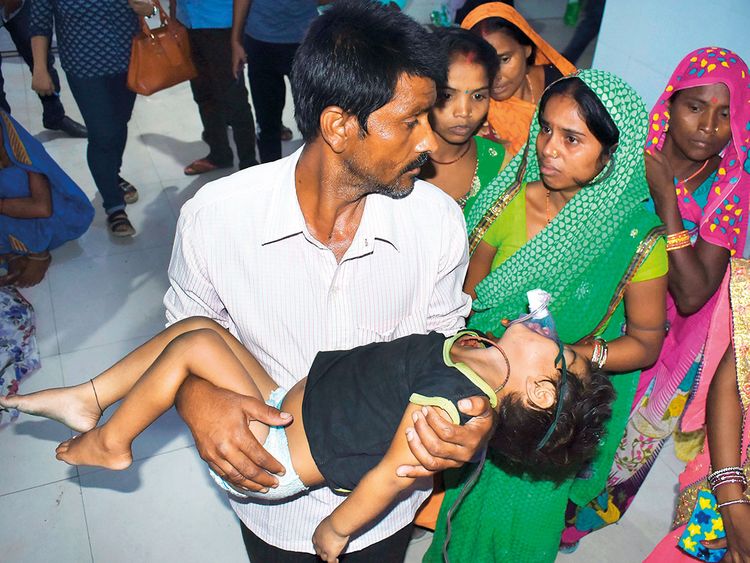Source: thehindu.com
Moderate Acute malnutrition (MAM): Children aged between six months and 59 months who are between the -2 and -3 standard deviation for weight for height (wasting) score.
Severe Acute Malnutrition (SAM): Children aged between six months and 59 months and have a weight for height (wasting) score 3 standard deviations below the median, have a mid-upper-arm circumference less than 115 mm, or the presence of bilateral edema.
Severe Chronic Malnutrition (SCM): Calculated with the Z-score defined as a height-for-age index less than –3 standard deviations from the mean weight of a reference population of children of the same height and/or having edema.
Stunting: Calculation is based on height-for-age. It is is associated with an underdeveloped brain, poor learning capacity, and increased nutrition-related diseases.
Wasting: Calculated by weight-for-height. It is associated with decreased fat mass. Also known as wasting syndrome, it causes muscle and fat tissue to waste away.
Underweight: Calculated by the weight-for-age formula. It is a body weight considered to be too low to be healthy. It can reflect both stunting and wasting.
Key highlights of the report
The highest levels of stunting and underweight are found in Jharkhand, Bihar, Uttar Pradesh, Madhya Pradesh, Gujarat and Maharashtra.
At the national level, among social groups, the prevalence of stunting is highest amongst children from the Scheduled Tribes (43.6 percent), followed by Scheduled Castes (42.5 percent) and Other Backwards Castes (38.6 percent).
The prevalence of stunting in children from ST in Rajasthan, Odisha and Meghalaya is high while stunting in children from both ST and SC is high in Maharashtra, Chhattisgarh and Karnataka.
Prevalence of wasting is highest in Jharkhand (29.0%) and above the national average in eight more States (Haryana, Goa, Rajasthan, Chhattisgarh, Maharashtra, Madhya Pradesh, Karnataka and Gujarat) and three UTs (Puducherry, Daman and Diu and Dadra and Nagar Haveli).
Prevalence of underweight is also highest in Jharkhand (47.8%) and is above the National average in seven more States (Maharashtra, Rajasthan, Chhattisgarh, Gujarat, Uttar Pradesh, Madhya Pradesh and Bihar) and one UT (Dadra and Nagar Haveli).
Food and malnutrition in the country
Over the last 20 years, total food grain production in India increased from 198 million tonnes to 269 million tonnes. Despite increase in food production, the rate of malnutrition in India remains very high.
In the food basket, it turns out that in both urban and rural areas, the share of expenditure on cereal and cereal substitutes has declined between 1972-73 and 2011-12, from 57% to 25% in rural areas and from 36% to 19% in urban areas.
The energy and protein intake from cereals has decreased in both rural and urban India, largely because of increased consumption of other food items such as milk and dairy products, oils and fat and relatively unhealthy food such as fast food, processed food, and sugary beverages.
The consumption of unhealthy energy and protein sources is much higher in urban areas.
Double burden of malnutrition
For several decades India was dealing with only one form of malnutrition– undernutrition. In the last decade, the double burden which includes both over- and undernutrition, is becoming more prominent and poses a new challenge for India.
From 2005 to 2016, prevalence of low (< 18.5 kg/m2) body mass index (BMI) in Indian women decreased from 36% to 23% and from 34% to 20% among Indian men.
During the same period, the prevalence of overweight/obesity (BMI > 30 kg/m2) increased from 13% to 21% among women and from 9% to 19% in men.
Children born to women with low BMI are more likely to be stunted, wasted, and underweight compared to children born to women with normal or high BMI.
